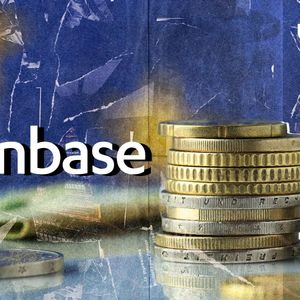Summary The Swiss National Bank cut interest rates to 0%, making Swiss Franc borrowing cheap: I present a provocative Carry Trade idea with Bitcoin. A CHF-USD carry trade is unattractive due to the CHF’s long-term appreciation against the USD, which lost 81% of its value vs. CHF since the 1970s. Borrowing CHF to buy BTC assumes Bitcoin’s continued appreciation and low SNB rates, with BTC historically showing a ~50% CAGR in USD terms from 2015-2025. Bitcoin’s speculative nature remains a key risk, only (maybe) suitable for CHF-exposed Bitcoin bulls; those without CHF exposure or bearish on Bitcoin should avoid it. The Swiss National Bank [SNB] just cut its interest rates to 0%. This is the first major bank in a developed country to revert to a Zero Interest Rate Policy [ZIRP] since 2021, with rates that are now lower than even those in Japan , at 0.50%. In this article, I will present the somewhat provocative case for a “Carry Trade” consisting of borrowing cheaply in Swiss Francs ( CHF:USD ) to buy Bitcoin ( BTC-USD ). As I will outline in my risk and disclaimer sections, this is a trade that could make sense primarily for people that gain in Swiss Francs, either in the form of a wage, a pension or assets generating CHF (for example, Swiss real estate or Swiss corporate bonds). Obviously (but importantly), it is also a trade that only makes sense as long as whoever decides to carry it believes in the long-term potential and appreciation of Bitcoin. Why A CHF - USD Carry Trade Would Be A Bad Idea While this article concerns Bitcoin, I think it’s important to spend a few words explaining why I wouldn’t enter a carry trade between the CHF and the USD. On paper, this more “traditional” trade could make more sense (and be safer) t han a carry trade with a cryptocurrency . It could even resemble the carry trades involving the Japanese Yen ( USD:JPY ) that took place in the last decade (and are still going). Those profited from a very expansive BoJ monetary policy, driven by the Japanese demographic collapse and stagnant productivity. Traders could safely bet that the BoJ had to keep interest rates low to support its economy, while the healthy state of the US economy warranted permanently higher rates. However, anyone familiar with currency fluctuations in the slightest will know this parallel wouldn’t work with the Swiss Franc. The CHF is undergoing a secular appreciation trend against the USD , as shown by the chart below. CHF - USD Long term FX Rate (Wikimedia Commons) In the 1970s, 1 American dollar could buy more than 4 Swiss Francs. Today, the US dollar is weaker than the Swiss Franc, with 1 USD buying only about 0.82 CHF at the time of writing this article. In other terms, the USD lost approximately 81% of its value against the Swiss Franc in roughly half a century. The reasons behind this dynamic are many, and go beyond the scope of this article. In short, it has to do with the Swiss Franc being considered a global “safe haven” asset, behind the resilience of the Swiss economy and its fiscal rigor (note that, paradoxically, one of the reasons behind the recent SNB cuts is exactly the excessive appreciation of the CHF, which puts a strain on the Swiss economy). What matters for the sake of this exercise, is that the 4% - 5% “risk-free” yields that investors could get from US debt in USD are hardly enough to justify a carry trade with a currency that lost 10% against the other in 2025 YTD alone. The Assumptions Behind A CHF - Bitcoin Carry Trade A traditional carry trade would see borrowing in a currency with a low-interest rate and invest in a currency or asset offering a higher interest rate, aiming to profit from the differential. The main difference between a traditional carry trade between two fiat currencies and one involving Bitcoin is that Bitcoin does not produce any yield . As a cryptocurrency that is not subject to the monetary policy of any central authority, there is no “cost of money” in Bitcoin terms. There is also no concept of “risk-free” Bitcoin yield. The financial products that today provide a yield on Bitcoin do so artificially, and are from being risk-free (in the traditional definition, i.e. debt issued by entities that can issue the same currency the debt is denominated in). Examples of products that generate a BTC Yield are MicroStrategy Incorporated's ( MSTR ) new preferred stocks or the YieldMax Bitcoin Option Income Strategy ETF ( YBIT ). For this reason, borrowing in CHF to buy BTC rests on two simple, yet substantial, assumptions: Bitcoin will permanently appreciate in CHF terms. The SNB will maintain rates that will always be significantly lower than the CAGR of Bitcoin in CHF terms. Bitcoin has historically appreciated in USD terms at a CAGR of ~ 50% between 2015 and 2025. Note that I am choosing a 10-year timeframe since the first 5 years of life for Bitcoin skew results as the cryptocurrency rapidly grew from being worth close to nothing to a multi-billion dollar asset. Even with the USD depreciating against the CHF, Bitcoin has performed well also in CHF terms, with a CAGR just slightly below that of the USD, at ~45%, according to my own calculations (sadly I could not find third-party research on the CAGR of BTC between 2015 and 2025). Of course, past performance is no guarantee of future results. That’s why in the next section I won’t be taking a ~50% CAGR as the base for my exercise. How A CHF - BTC Carry Trade Could Look Like The fact the Swiss National Bank has cut rates to 0% does not necessarily mean investors can easily borrow Swiss Francs at a 0% interest. Of course, the exact rates will depend on the person or legal entity asking, the time frame and the bank(s) involved. Being based in Switzerland, I know personal loans for retail customers in the country still go for north of 4% yearly, and even interest rates for home mortgages currently range from 0.8% to 1.3% yearly - significantly above the 0% reference rate. The reference rate I will use for this exercise is that of Interactive Brokers Group, Inc. ( IBKR ), my broker of choice. For an account funded with CHF 1 Million, IBKR currently charges just above 1% of yearly interest (see image below). I find Interactive Brokers offers very competitive rates on margin loans, even if of course high net worth individuals may very well manage to get a loan in CHF for 0.5% yearly interest or less. IBKR.com With that in mind, the question becomes what is the difference between this ~1% rate and the return investors can expect from Bitcoin? To establish that, one could refer to CAGR figures from Michael Saylor - which estimates Bitcoin will see average yearly returns of 29% for the next 20 years. Other research suggests a 22.5% CAGR until 2030. The truth, I think, is that the exact differential does not matter. First, because for this trade to work one has to believe in Bitcoin maturing as a global reserve asset and appreciating for the foreseeable future. Second, because if we grant that first assumption as true, the differential would be enormous no matter the exact figures . It would be the best carry trade ever conceived: borrowing at the cheapest rate in fiat currency terms to purchase the global reserve asset. And here lies my “provocation” for this article: Bitcoin believers do not need to be told that borrowing in fiat to buy Bitcoin makes sense. What is more interesting, I believe, is how bad a traditional carry trade with another fiat currency (the USD) looks like against a carry trade with Bitcoin. The (many) limits Of A CHF - BTC Carry Trade Idea A fair counterargument to my CHF - BTC carry trade idea is that investors could probably benefit almost equally from borrowing in USD as in CHF. While rates are significantly higher in USD, in a scenario where Bitcoin matures into a global reserve asset, that difference may be somewhat negligible. In a context where Bitcoin were to grow at a 20% to 30% CAGR for the next 5 to 10 years, paying 1% of 5% for a loan would not represent a massive difference in returns, especially when accounting for a likely higher CAGR in USD terms (BTC is also far more liquid and traded in USD than in CHF). Another important risk to this carry trade idea is the fact that anyone performing such a trade without being exposed to the CHF in any way would be indirectly exposed to a carry trade between the CHF and their currency of reference. For example, someone earning in USD and taking a loan in CHF would need to repay their loan in an ever-appreciating currency against their base currency. Curiously, this is exactly what happened to Polish and Greek citizens that decided to open loans denominated in CHF in the early 2000s, as this became possible thanks to new EU regulations and Pan-European treaties. Of course, as long as Bitcoin appreciates in CHF terms, this theoretically would not matter. But it compounds the risk involved. This implied carry trade within the carry trade is the reason why I would discourage anyone not exposed to the CHF to ever consider the idea of borrowing in CHF to buy Bitcoin. Investors that are either earning a wage, a pension or receive a yield from rent or Swiss bonds would be better covered, as they could always cover their loan with CHF. In other terms, this trade makes sense for investors whose base currency is the Swiss Franc, or those that have significant exposure to the Swiss Franc. However, the main risk of my thesis of course concerns a bearish case for Bitcoin. Bitcoin remains a highly speculative bet at the time of writing, in my view. While I am personally very bullish on it - having covered it multiple times on Seeking Alpha - I recognize that Bitcoin still has a long way to mature as a global reserve asset. In a scenario where BTC never gets there, this carry trade idea would make no sense and result in significant losses. Regardless of the fact that historically BTC has always massively appreciated against all fiat currencies, CHF included. Conclusion In writing this article, the thing that most surprised me is not “how good” a BTC - USD carry trade may (or may not) be, but rather how it still makes incredibly more sense than a carry trade with the USD. Even readers who are not bullish on Bitcoin should realize this says a lot about the current state of the US economy and the trust in the USD when a carry trade with a cryptocurrency that did not exist 18 years ago makes much more mathematically sense than trading in USD. Ultimately, I am not really recommending anyone to take a “cheap” loan in CHF to buy BTC. Bitcoin bulls do not need to be told that selling fiat for BTC makes sense. If they are exposed to the CHF (and/or based in Switzerland), they may consider a margin loan to buy BTC - as long as this is in line with their risk propensity and investment objectives. Bitcoin bulls who do not have any exposure to the CHF are best avoiding this idea, as they would also enter an indirect carry trade with the USD. Finally, Bitcoin bears will find the idea ludicrous to start with.



















